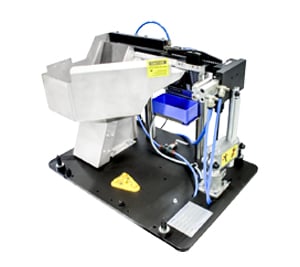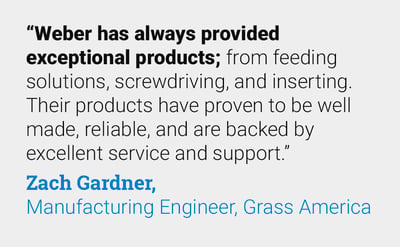3 min read
Clamp Load: Why Tightening Torque Alone Doesn’t Tell the Full Story (Part 1)
By: Carey Dupuy Aug 5, 2025 10:49:26 AM

This is Part 1 of our two-part series exploring why torque-based fastening doesn’t always lead to reliable joints. In this post, we’ll explain why clamp load (not torque) is the real performance metric that matters. Part 2 will dive into joint relaxation: what happens to clamp load after installation and how to design around it.
Torque Is Only Part of the Equation
Torque specs are everywhere in manufacturing. They’re easy to measure, easy to document, and give the illusion of precision. But when it comes to actually holding a joint together, especially in demanding environments, torque is just the input. Clamp load is the output, and it’s what determines whether that joint performs under real-world conditions or fails when it matters most.
Torque is a rotational force. Clamp load is tension, or the actual force clamping the components. They’re related but not interchangeable. Variability in materials, thread friction, or finish can all cause wide swings in the resulting clamp load, even when the same torque is applied. That’s where problems begin. That gap between what is used and what is achieved is the blind spot in many fastening processes because, without direct measurement or analysis, it’s impossible to tell whether the clamp load falls within an acceptable range.
Why Torque Alone Isn’t Reliable
While torque tools can read consistently on the line, they struggle to confirm how much force is actually translated into joint tension due to surface coatings, material stack-up variations, and even environmental conditions such as humidity or temperature. All of these variables can affect the torque-to-tension relationship. In many applications, relying on torque alone can create a false sense of security.
WEBER sees this most clearly in electronic assemblies. One typical example is securing a printed circuit board to an aluminum chassis. Typically, four screws go into the corners, which is straightforward enough. If one is left out, the board will likely remain in place once the cover is installed. At first glance, it doesn’t seem too important.
But those screws often do more than provide structure. They ground the board. Without proper clamp load, the conductivity between the board and chassis can be compromised. If the clamp load isn’t there, even by something as subtle as backing the screw off one-eighth of a turn, that electrical connection may become unreliable.
Real-World Consequences of Inconsistent Clamp Load
This isn’t just a theoretical risk. WEBER has seen real-world examples where small inconsistencies in clamp load led to floating grounds, EMI issues, or boards that failed only after thermal cycling or vibration exposure in the field. Identifying these potential failure points requires a system-level view of the fastener’s function, not just its mechanical fit.
The board might pass all in-plant testing, including high-pot tests. However, it could fail once deployed, especially in environments with heat, vibration, and dynamic loads.
These are the kinds of problems that WEBER engineers are trained to catch. The screw may be tight, but that doesn’t mean the connection is sound. Torque-based specs miss the bigger picture. A consistent, repeatable clamp load is what keeps joints stable, both structurally and electrically.
Clamp Load is the Real Metric That Matters
Clamp load may not be visible, but its absence is evident in field failures, warranty claims, and expensive rework. That’s why it’s the metric WEBER pays attention to even when no one else is looking.
Next up: Part 2 dives into what happens after installation, when clamp load starts to disappear. Read our follow-up blog: Joint Relaxation: Fixing What You Can’t See.







